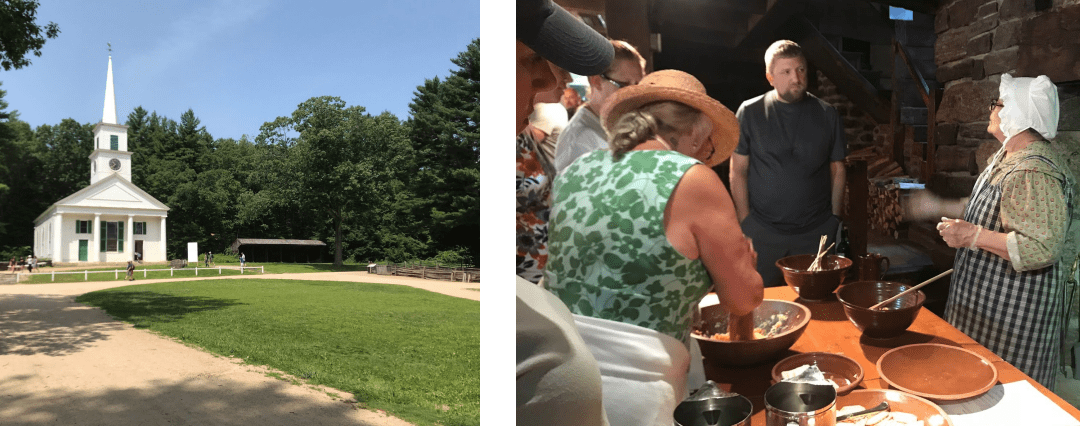By Maeliz Colon
I had a wonderful opportunity to accompany the workshop for the National Endowment for the Humanities. There were teachers from all over the country participating in this week long workshop; most of them were history and social studies teachers. The overall objective for them was to work on a source set inquiry based lesson plan. I joined them on Monday, July 8th. I was ultimately there with them to represent the armory, as well as, bring my own knowledge and experience to the hypothetical table. The week was full of field trips, lectures, and lots of discussions. I have so many photos of all the interesting things I got to see and can go on and on about all the notes I took, but honestly it was so rewarding to spend time with those teachers and help them find primary and secondary sources from the collection at SPAR. The focus of the workshop was ultimately on New England history (mostly Massachusetts) and the development of the industry, I was able to learn a lot about Springfield and the neighboring areas.
We actually finished the week with a visit to the Springfield Art Museum and the neighboring museums. We were able to see the evolution of the paintings and the stories behind them. Interestingly enough, this was helpful for the teachers as well because pictures are considered primary sources as well and it aids with the understanding of interpretation. We also received a presentation/ lecture from Cassie Brown author of Rosie’s Mom: Forgotten Women Workers of the First World War. Which provided insight to a time period for women that isn’t discussed that too often.
On Wednesday July 10th we went over to where the SPAR watershops used to be and then took a trip to Old Sturbridge Village. We received a lecture from a University of Connecticut professor on currency and what type of social behaviors were associated to currency in the 1830s. Also taking a tour of the grounds was engaging and helps put the technology of the time in perspective; that these people were people and lived in circumstances that seem so alien in the modern day. The village contained tools and some people along the facilities were using the tools as they would in the 1830s.
I also chose to focus on a few days of my trip as opposed to the entire week, because I would be repeating the process with a new group of teachers. Nonetheless, the entire workshop was refreshing and I was able to get a different perspective from teachers and just lesson planning all together. I know that teaching and sharing information is an important part of raising awareness of resources and simply effectively conveying a historical story; being a part of this type of workshop is giving me a lot of exposure to a variety of themes and topics.
The photos I took are in no particular order:






